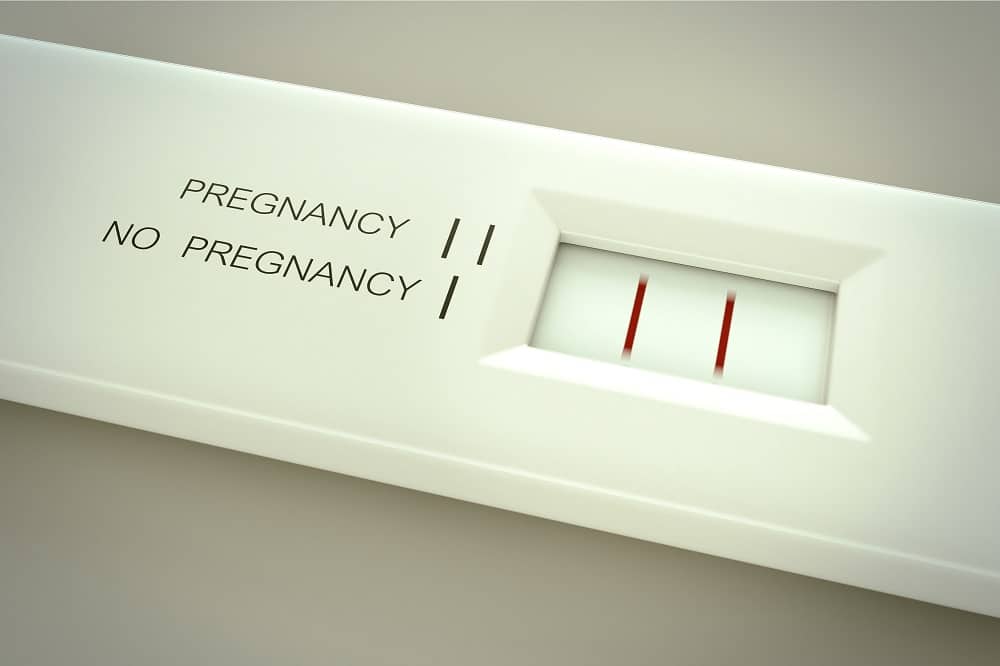Historically, detecting pregnancy in women involved different methods that were highly associated with cultural beliefs (e.g., Egyptians had women urinate on wheat and barley seeds – whichever seeds sprouted indicated the baby’s sex). Fortunately, modern advancements have allowed individuals to detect pregnancy from the comforts of their home within minutes. Most women would first suspect pregnancy upon their first missed period, but that time period can vary depending on when their last period was relative to conception. From conception to fetal implantation, how early can a gyne detect pregnancy?
A blood test taken at a gynecologist’s clinic can detect pregnancy as early as 3-4 days after implantation or 10-11 days after fertilization. A blood test is the earliest and most accurate test to confirm pregnancy. Comparatively, home pregnancy tests are often recommended to be used only after a missed period. Otherwise, individuals can wait 1-2 weeks after having sex.
Signs of Pregnancy
Pregnancy is an important phase in a woman’s life that affects the body in several ways. Due to the pregnancy, certain flow of hormones and neurotransmitters can instill some changes that can become signs of pregnancy.
The first telltale sign of a pregnancy is the absence of menstruation and subsequent weight gain. By nature, the monthly evacuation of menstruation is the body’s sign that it prepared for a pregnancy that did not occur. Thus, the absence of menstruation means that the body is keeping the extra uterine lining it prepared specifically for the pregnancy. Typically, this is the first sign that individuals wait for before confirming the pregnancy with a home pregnancy test or going to a gynecologist.
Other early pregnancy symptoms can include mood changes, increased urination, headaches, lower back pain, sore breasts, darkened areolas, weakness, nausea (AKA morning sickness), and implantation bleeding.
Throughout the pregnancy, other symptoms can be included such as leg swelling, heartburn, urine leakage, and shortness of breath.
Different Types of Pregnancy Tests
Once a woman is pregnant, they can choose among several different tests available that can detect their pregnancy. These tests include blood tests, urine tests, and other forms of examination.
Urine Test

The most common way to detect a pregnancy is through a urine test – particularly using a home pregnancy test. Home pregnancy tests are highly accessible from local pharmacies, drugstores, grocery stores, and even convenience stores. One of the fastest and cheapest ways to detect pregnancy, the home pregnancy test kit typically includes sticks that the woman can either dip into urine or urinate onto directly (depending on the purchased home pregnancy test).
The home pregnancy test was designed to detect a specific hormone that is only present in pregnant women called human chorionic gonadotropin (hCG). This hormone is produced by the cells surrounding a growing embryo. Once the home pregnancy test has been used, the users are then instructed to wait for a few minutes to give the kit enough time to assess the results. Depending on the kit, the results can then either present a plus (positive) or a minus (negative), or one line (positive) or two lines (negative). More advanced tests can have a digital display that can spell out the results.
While home pregnancy tests are highly affordable and accessible, home pregnancy tests are capable of producing incorrect results. Despite most marketed home pregnancy tests claiming to have 98-99% accuracy, numerous studies show that this is not often the case.
Butler et al. in 2001 investigated the detection limits of 15 different types of home pregnancy tests. With 592 urine samples across 15 home pregnancy tests, results showed that nine out of the 15 tests showed poorer detection limits than their claims.
Gnoth & Johnson (2014) conducted a study evaluating the effectiveness of home pregnancy tests in Germany. The study found three out of nine brands tested did not provide accuracy ratings as stated on their label.
Women are also able to get a urine test at the gynecologist’s clinic. Having urine tested at a clinic still uses the same principles as a home pregnancy test since the laboratory will perform assays to detect hCG. This means that the accuracy between a home pregnancy test and a urine test at a gynecologist’s clinic is practically the same.
Blood Test
A more accurate test that can only be done at the gynecologist’s office would be a blood test. Still using the same principles, the laboratory at a gynecologist’s office will attempt to detect hCG in the blood sample.
However, hCG presence in the blood is more reliable than a urine sample because laboratory technicians can quantitatively measure the amount of hCG in a woman’s blood sample. Furthermore, the blood test is a more reliable method since it can actually detect hCG presence before hCG can be detected in the urine of a pregnant woman.
At best, a blood test can detect pregnancy as early as 3-4 days after implantation or 10-11 days after fertilization. Blood tests are also highly informative for gynecologists. Having the ability to quantitatively measure the hCG levels in the blood means that gynecologists are able to track the levels through time.
Given hCG levels usually double every two to three days in early pregnancy, the data will provide the physician enough information to monitor the pregnancy for miscarriage, ectopic pregnancy (the fertilized egg implants along the fallopian tube instead of the uterus), as well as the possibility of having twins or more.
Common Errors in Home Pregnancy Tests
Despite the incredibly high accuracy rating claimed by home pregnancy tests, errors can occur. There are two main errors when taking home pregnancy tests: false negatives and false positives. A false negative is a test that gives an individual a negative pregnancy result despite actually being pregnant. On the other hand, a false positive is a test that gives an individual a positive pregnancy result while they are not actually pregnant.
The more common error to get in home pregnancy tests is the false negative. There are a few scenarios as to why the home pregnancy test can give out a false negative.
First, the individual could have taken the test too early during the pregnancy. The home pregnancy test detects pregnancy through hCG in the urine. Taking the test too early might not provide enough time for the hCG levels in the urine to be sufficient for detection. This is why blood tests are more accurate because they are able to detect lower hCG levels than a urine test.
Another common user error is not giving the test enough time to evaluate the urine. Overly excited individuals are prone to false negative results due to the lack of time provided for the test. Different home pregnancy tests come with different instructions. While some instruct users to wait 1-5 minutes after urinating on the stick or strip, some can have users wait up to 10 minutes.
Diluted urine can also be a cause for false negatives in home pregnancy tests. Throughout the day, liquids consumed accumulate in the urinary bladder. This means that the best time to take a home pregnancy test is in the morning with the first urination of the day. This is also why urine samples are recommended to be taken first thing in the morning since the hours of sleeping prior have provided enough time for the urine to be concentrated with certain substances that might not be detected when further diluted.
While not being very common, a false positive is a possible outcome. There are not many scenarios for this result to appear, but the common cause for a false positive is an early terminated pregnancy. If the pregnancy is lost right after the fertilized egg attaches to the uterine lining, then enough hCG will already have been produced to be detected by a home pregnancy test.
Other causes that can lead to a false negative or false positive include medication. For example, diuretics can quickly dilute an individual’s urine, causing the hCG levels to be too low for detection – leading toward a false negative. On the other hand, certain medications (e.g., fertility, antipsychotics, anti-anxiety, anticonvulsants, antihistamines, methadone, etc.) can cause false positive readings.
Final Thoughts
Having a number of options for detecting pregnancy available, the method that can detect pregnancy the earliest would be a blood test at the gynecologist’s clinic. Aside from getting informed the soonest about the pregnancy, serial blood tests over time are also recommended for the pregnant individual to provide the gynecologist another avenue for monitoring the pregnancy.
References
- Gnoth, C., & Johnson, S. (2014). Strips of hope: Accuracy of home pregnancy tests and new developments. Geburtshilfe und Frauenheilkunde 74(7), 661-669. doi: 10.1055/s-0034-1368589
- Butler, S., Khanlian, S., & Cole, L. (2001). Detection of early pregnancy forms of human chorionic gonadotropin by home pregnancy test devices. Clinical Chemistry 47(12), 2131-2136. https://doi.org/10.1093/clinchem/47.12.2131



